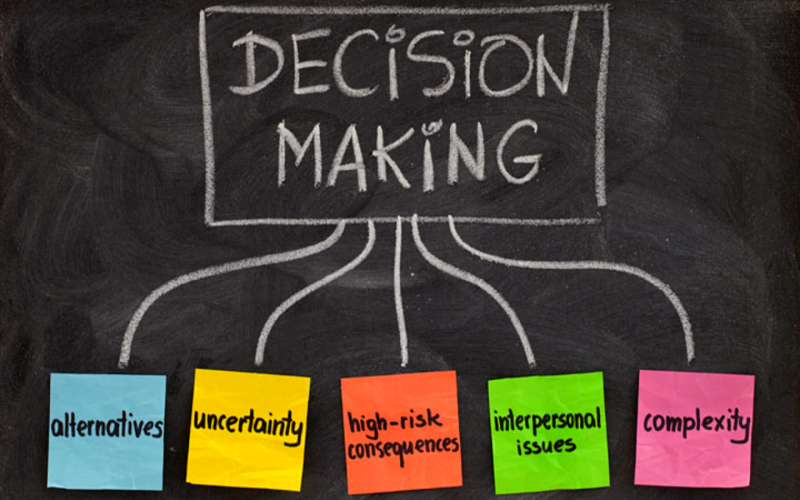Introduction
Every day we face choices, big and small. From what to eat for breakfast to major career moves, our lives hinge on how well we handle the decision-making process. The art of decision-making blends clear thinking, proven decision-making techniques, and self-awareness. When you learn to master these steps, you make smarter choices faster. In this guide, you’ll discover a simple process for making decisions and learn practical techniques you can apply right away. Whether it’s personal or professional, you’ll gain tools to decide with confidence.
Understanding the Decision-Making Process
The decision-making process is a series of steps you follow to reach a choice. Breaking it down helps you avoid confusion and regret. Here are the core stages:
1. Identify the Decision
First, clearly define what decision you need to make. Are you choosing a college major or picking a new phone? The clearer the question, the easier the answer.
2. Gather Information
Next, collect facts and opinions. Talk to experts, read articles, or look at data. Be careful not to overload yourself—focus on quality over quantity.
3. Identify Alternatives
List possible options. For a vacation, alternatives might include a beach, a mountain trip, or a city tour. More options give you a wider perspective.
4. Weigh the Evidence
Compare pros and cons for each choice. Consider risks and rewards. This step often reveals the best path forward.
5. Choose Among Alternatives
Pick the option that best matches your goals and values. Trust your analysis but also your gut—intuition matters.
6. Take Action
Once you decide, act. Book that trip or enroll in the course. Action turns ideas into results.
7. Review Your Decision
After some time, evaluate the outcome. Did your choice meet your expectations? What did you learn? This reflection improves future decisions.
Key Techniques for Smarter Choices
Beyond the basic process, specific methods help you make better decisions. Here are five proven decision-making techniques:
1. SWOT Analysis
- Strengths: What are the benefits of each option?
- Weaknesses: What downsides exist?
- Opportunities: What positive chances could arise?
- Threats: What risks might you face?
A SWOT chart gives a clear view of each alternative.
2. Cost-Benefit Analysis
List all costs and benefits with numbers if possible. For example, compare the price of a bike to the monthly cost of public transit. This method quantifies choices.
3. Decision Matrix
A table lets you score each option against key criteria like cost, time, and satisfaction. Add weights to criteria based on importance. This objective scoring helps eliminate bias.
4. The “5 Whys”
Ask “why” five times to dig into the root cause of a problem. This technique ensures you solve the real issue, not just its symptoms.
5. Pareto Analysis (80/20 Rule)
Identify the 20% of factors that cause 80% of results. Focus on top priorities to make decisions that yield the biggest impact.
The Role of Emotions and Bias
Even the best decision-making process can falter if emotions or biases take over. Here’s how to manage them:
- Acknowledge Emotions: Feelings like fear or excitement can cloud judgment. Name the emotion to reduce its power.
- Seek Diverse Views: Talk to people who see things differently. New perspectives reduce blind spots.
- Use a Cool-Down Period: For major decisions, sleep on it. A day’s distance often brings clarity.
- Watch for Common Biases:
- Confirmation Bias: Don’t only look for evidence that supports your view.
- Anchoring Bias: Avoid fixating on the first piece of information you get.
- Overconfidence: Be humble about what you know and what you don’t.
By checking emotions and biases, you keep the decision-making process honest.
Group Decision-Making Techniques
When decisions involve teams, you need extra tools to ensure everyone participates:
1. Brainstorming
Gather ideas without judgment. Later, sift through and refine the best suggestions.
2. Nominal Group Technique
Each person writes options silently, then shares them one at a time. This approach prevents loud voices from dominating.
3. Consensus Building
Discuss until everyone agrees on one choice, even if it’s not their first pick. This method builds strong team buy-in.
4. Delphi Technique
Experts answer questionnaires in rounds. A facilitator shares summaries after each round. This method gathers expert views without group pressure.
5. Majority Voting
List options and vote. The choice with the most votes wins. This democratic method is quick but may leave some unhappy.
Using the right group technique keeps the team efficient and united.
Tools and Technologies to Support Decisions
In our digital age, tools can speed up the decision-making process:
- Spreadsheets: Great for cost-benefit and decision matrices.
- Mind-Mapping Apps: Visualize options and their links.
- Project Management Software: Track decisions, tasks, and outcomes.
- AI-Powered Tools: Some apps analyze data and suggest options.
- Online Surveys: Gather team or customer feedback quickly.
When you combine human judgment with smart tools, choices become clearer and data-driven.
Developing Your Decision-Making Skills
Like any art, decision-making improves with practice. Here’s how to sharpen your skills:
- Reflect Regularly: After each choice, note what went well and what didn’t.
- Set Small Challenges: Make low-risk decisions quickly to build confidence.
- Study Great Decisions: Read about leaders who made tough calls and learn from their stories.
- Learn Continuously: Take courses or read books on critical thinking and leadership.
- Practice Mindfulness: A calm mind spots options and risks better than a stressed mind.
Constant practice turns the art of decision-making into a reliable strength.
Overcoming Decision Paralysis
Sometimes choices feel overwhelming, leading to “analysis paralysis.” To break free:
- Limit Options: Too many choices can stall you. Aim for three to five solid options.
- Set a Deadline: A time limit forces action.
- Embrace Imperfection: Recognize no decision is perfect. Mistakes become learning moments.
- Flip a Coin: If stuck, let chance decide. Often, your gut reacts immediately, revealing your true preference.
By using these tactics, you move from stalled to decisive.
Conclusion
Mastering the art of decision-making means following a clear decision-making process and applying effective decision-making techniques. Start by defining your choice, gathering information, and listing alternatives. Use tools like SWOT analysis or a decision matrix to compare options. Watch for emotions and biases that can cloud judgment, and seek diverse perspectives to stay balanced. In groups, choose a method—like brainstorming or majority voting—that fits your team’s needs. Finally, practice daily, reflect on outcomes, and embrace imperfect choices to build confidence. With these steps and skills, you’ll make smarter, faster decisions that drive success in life and work.









